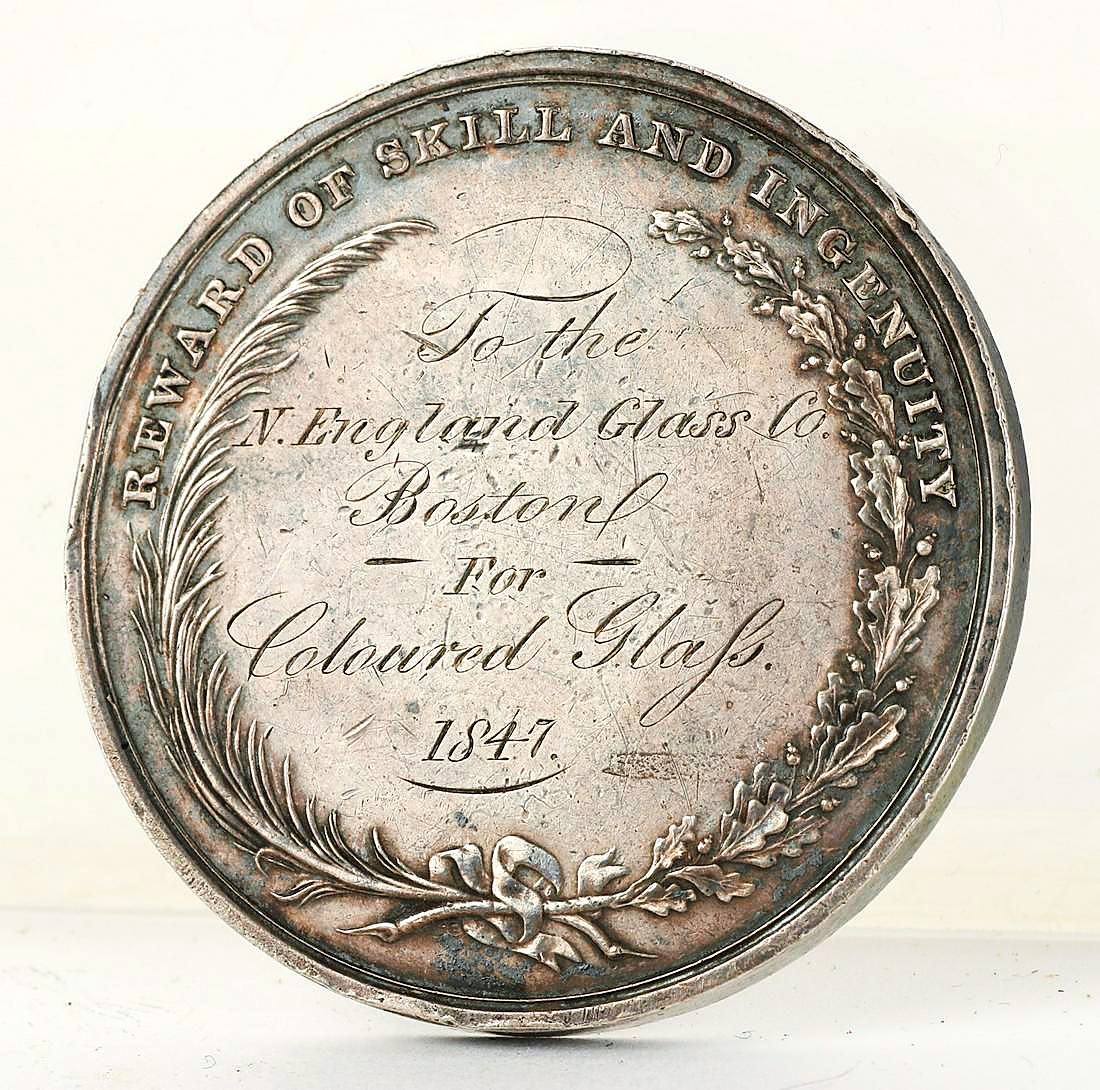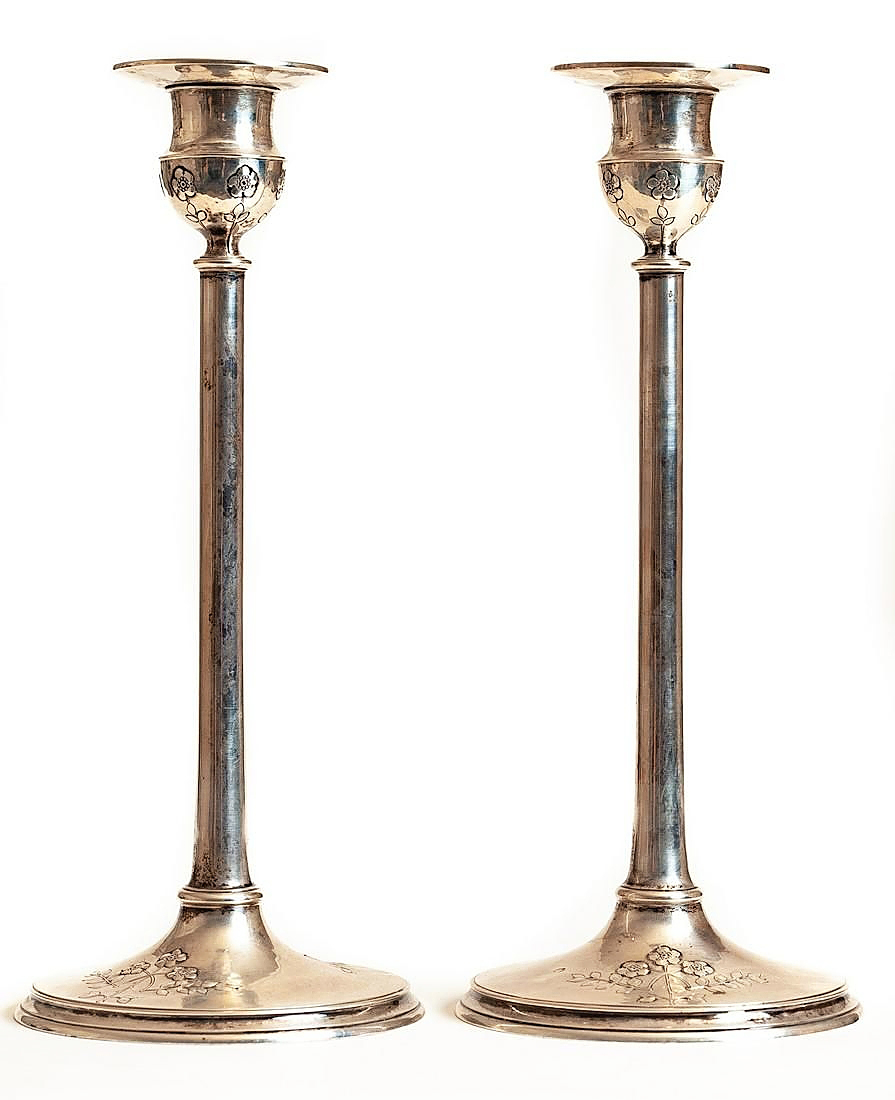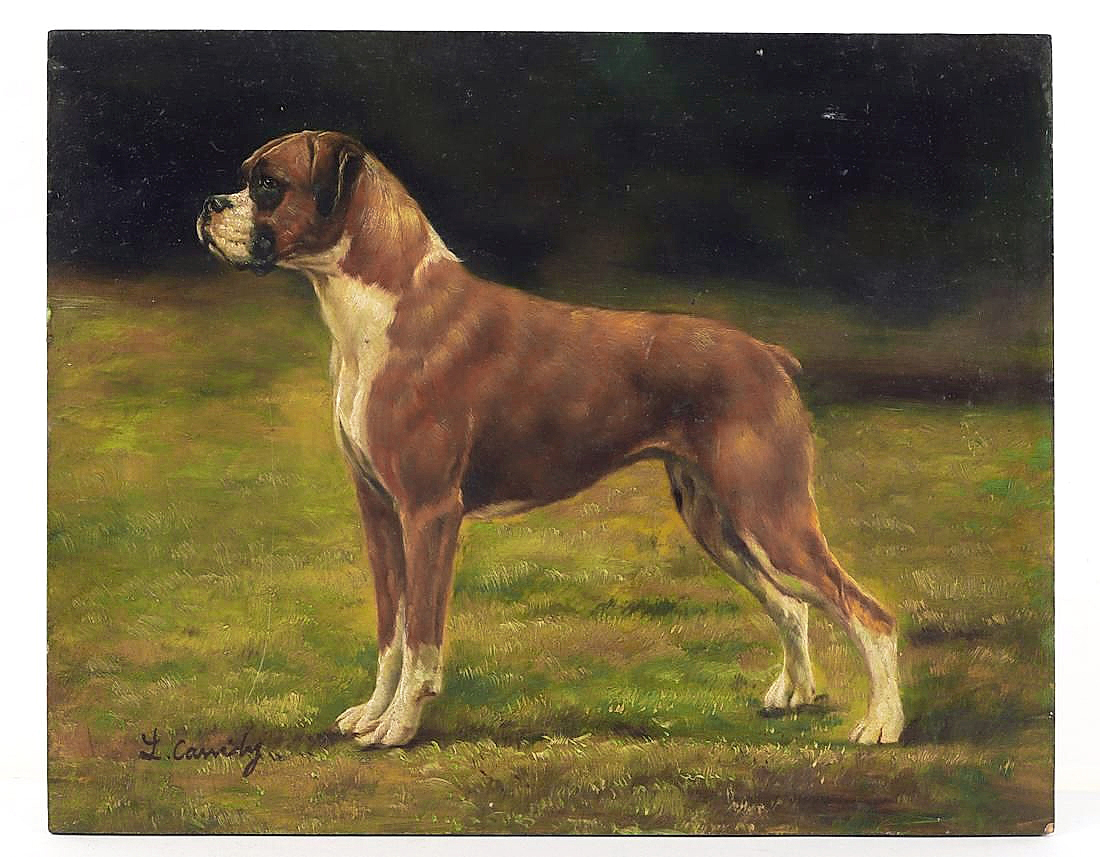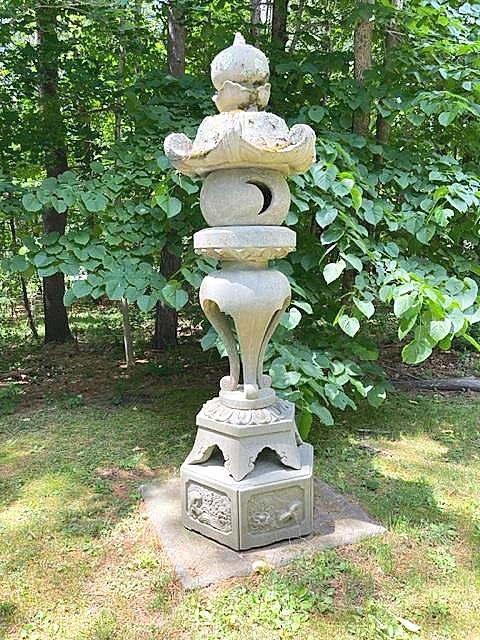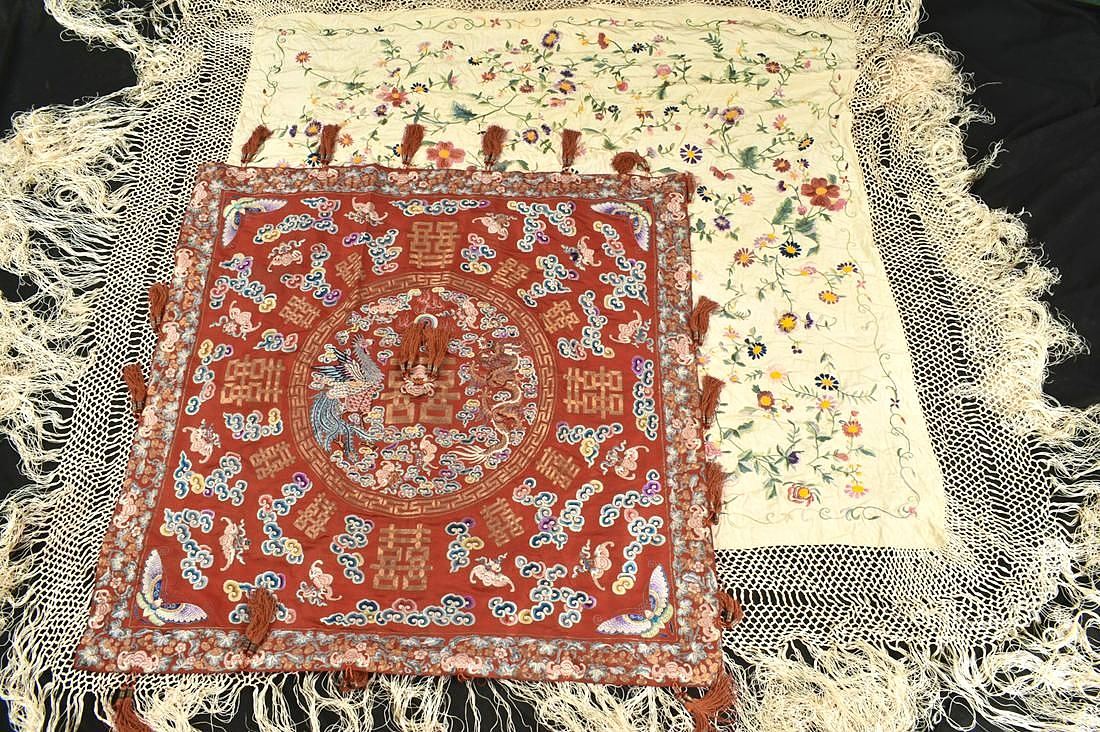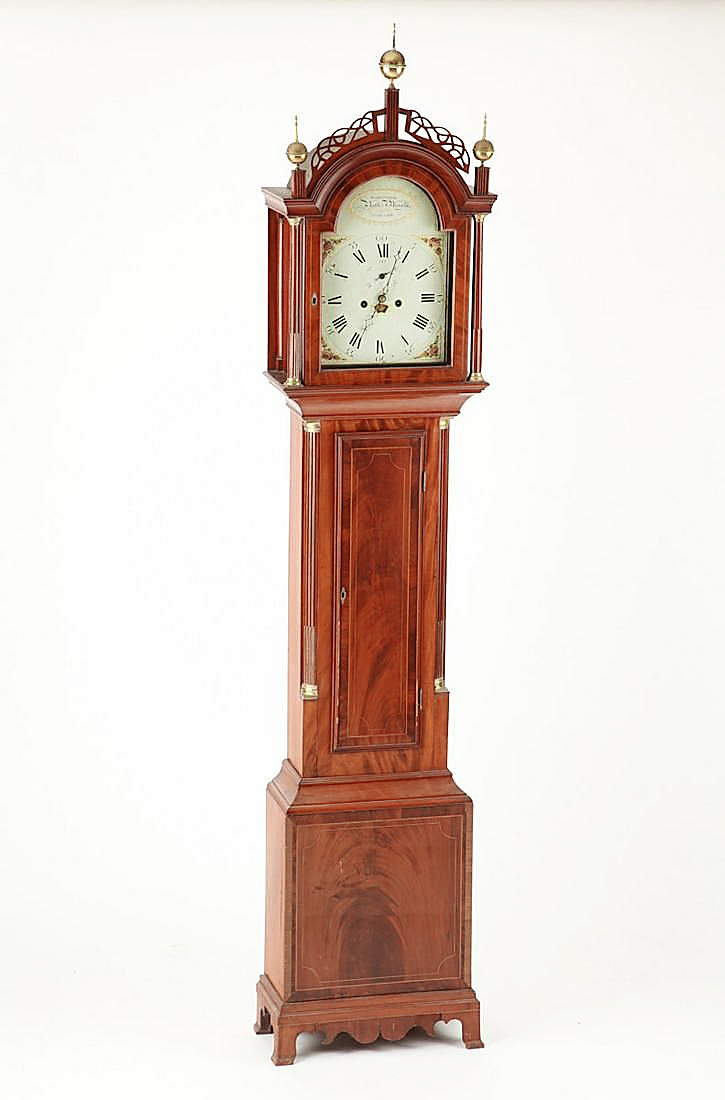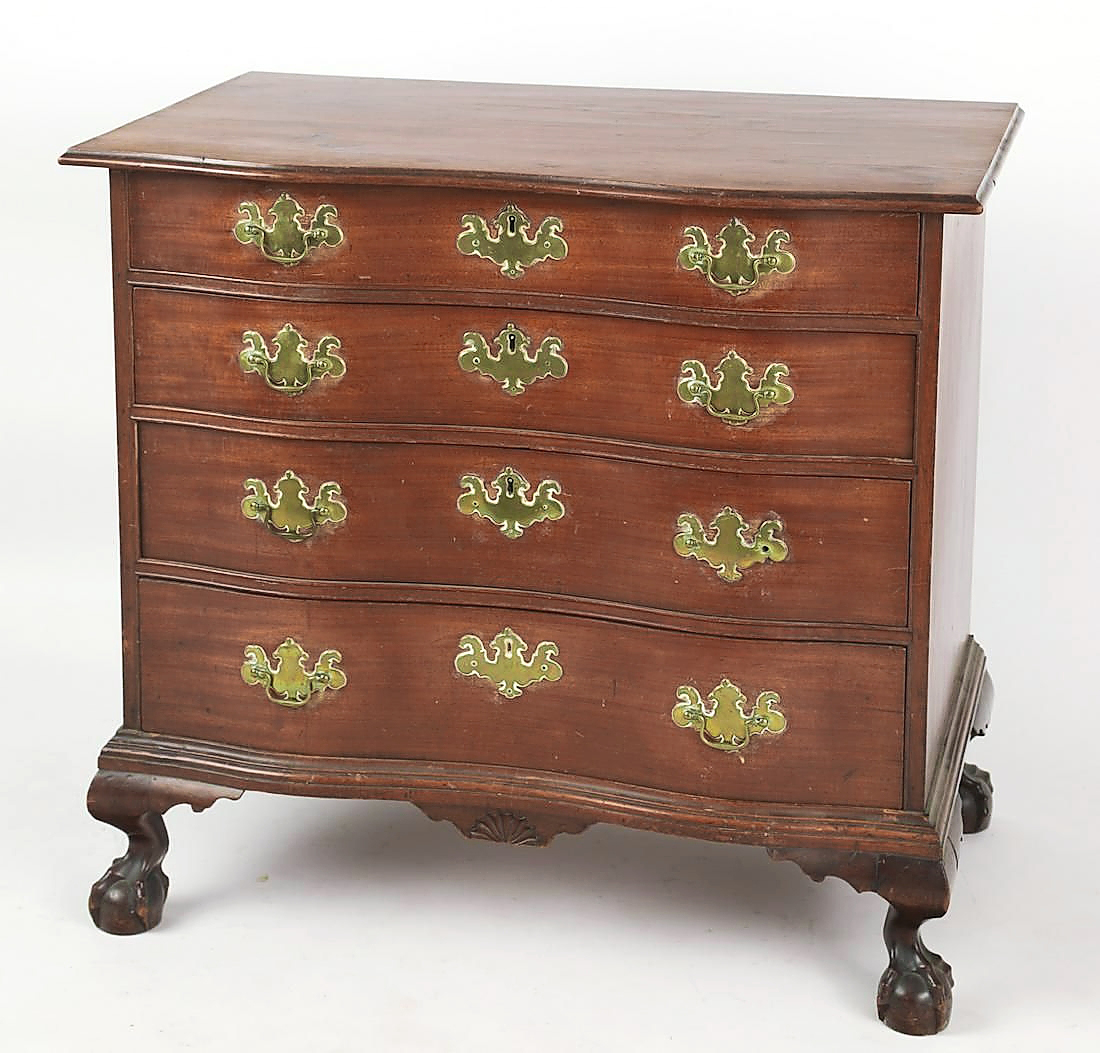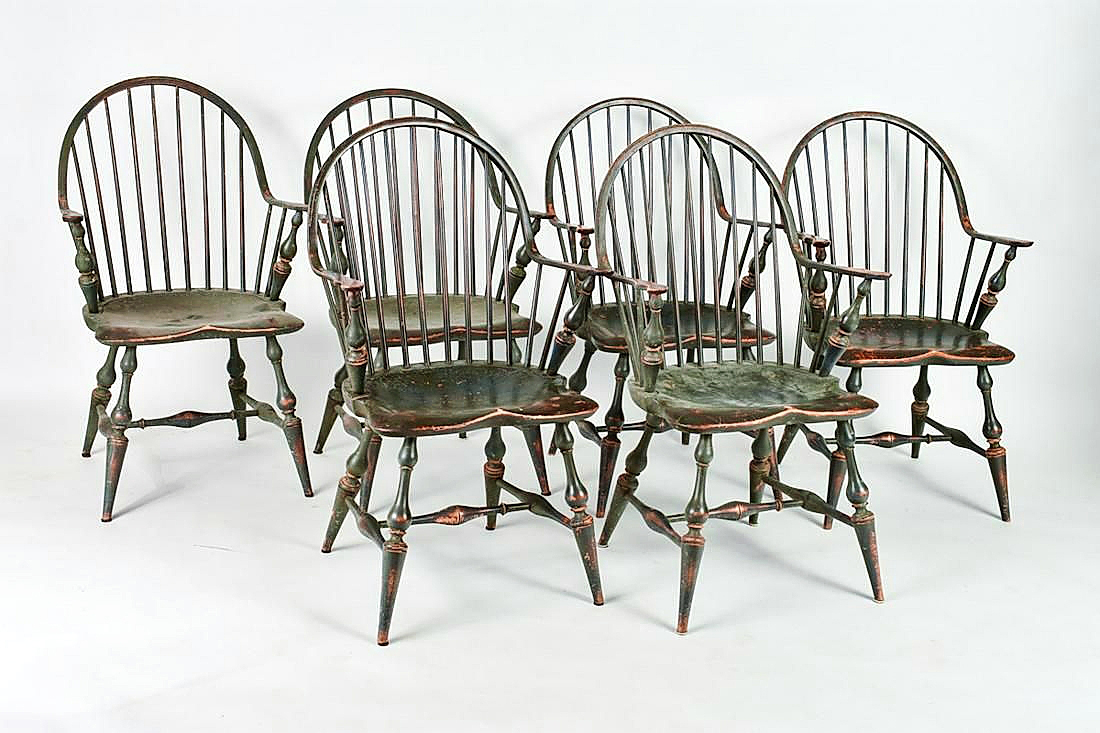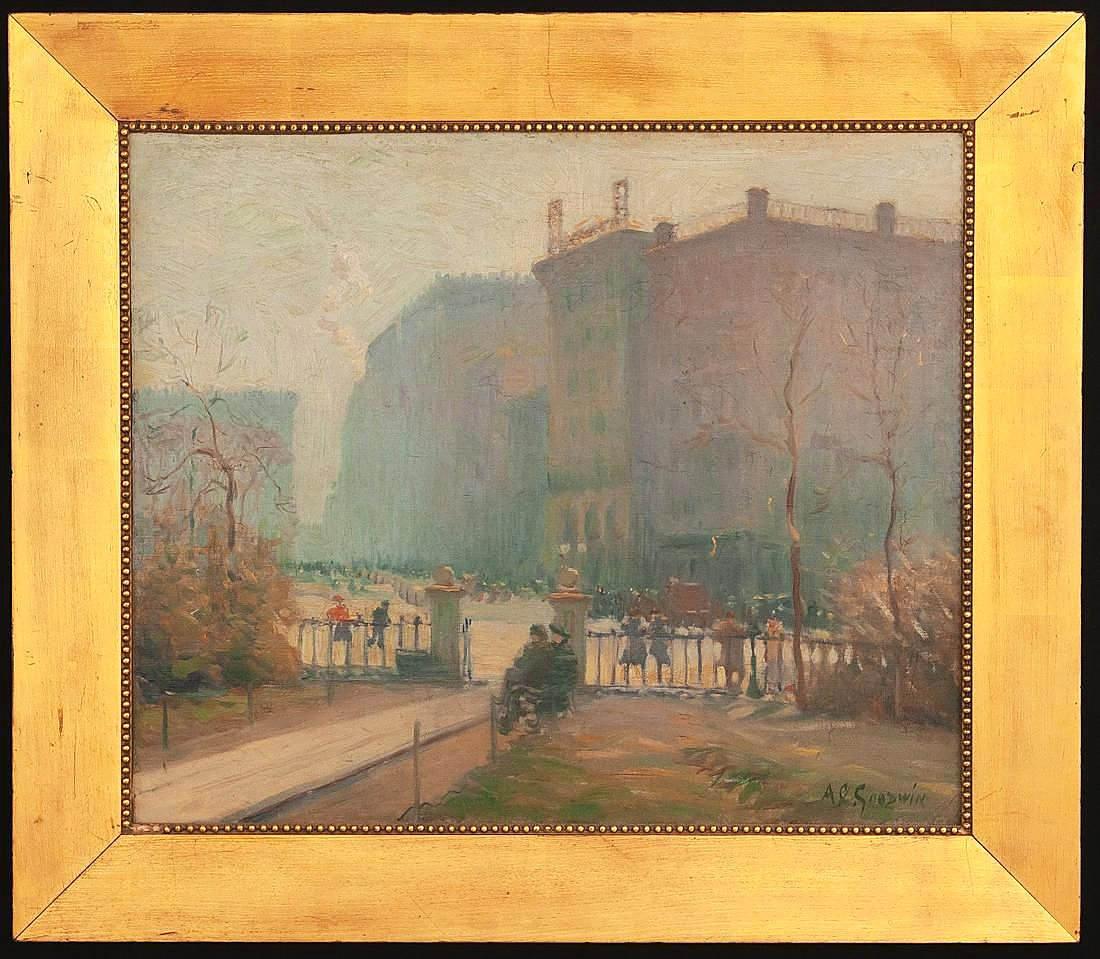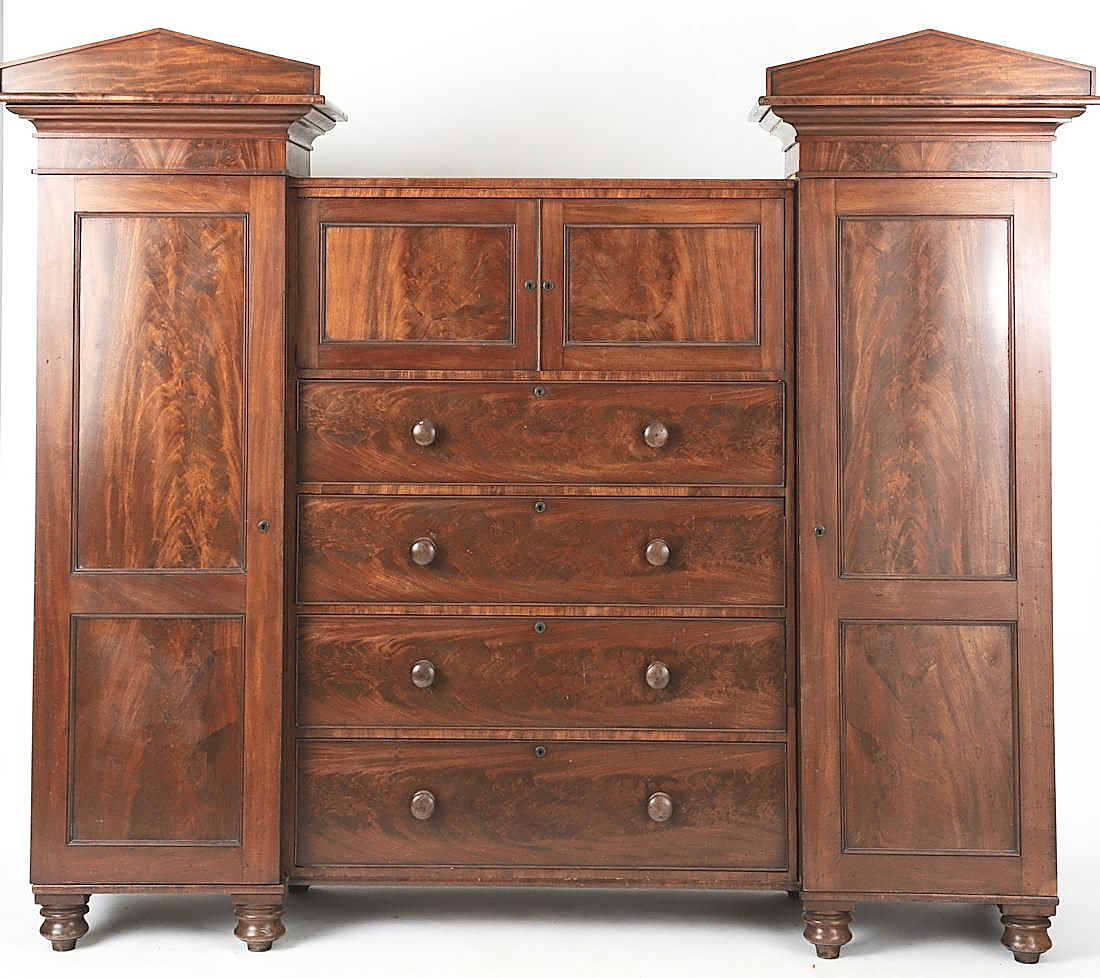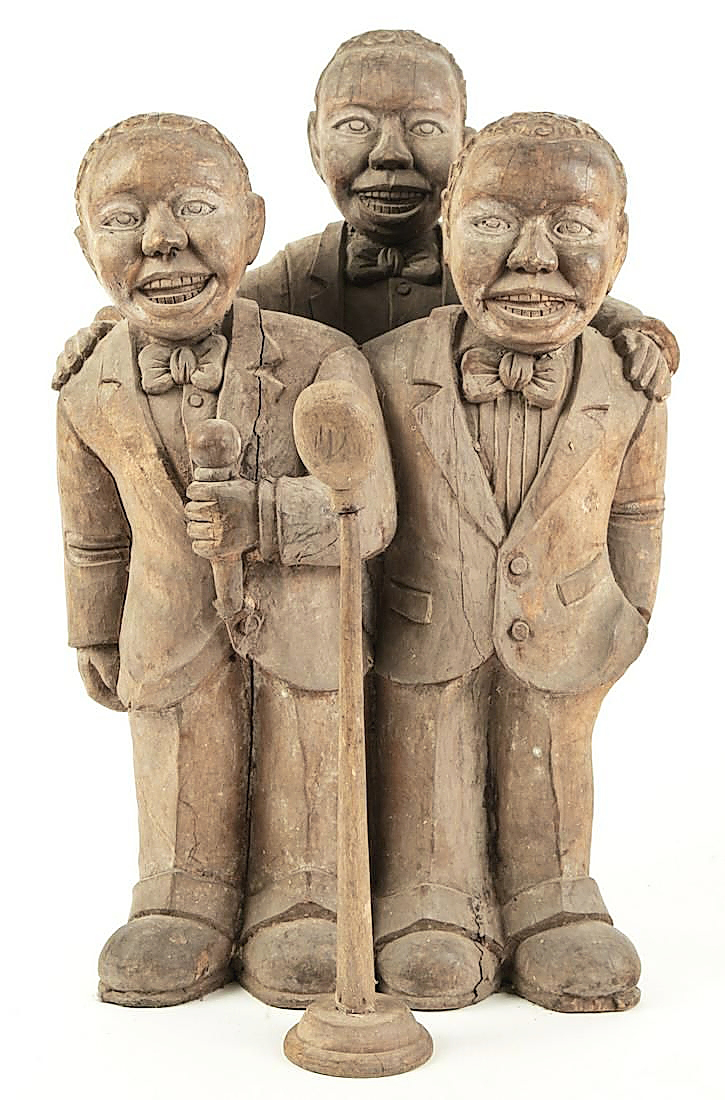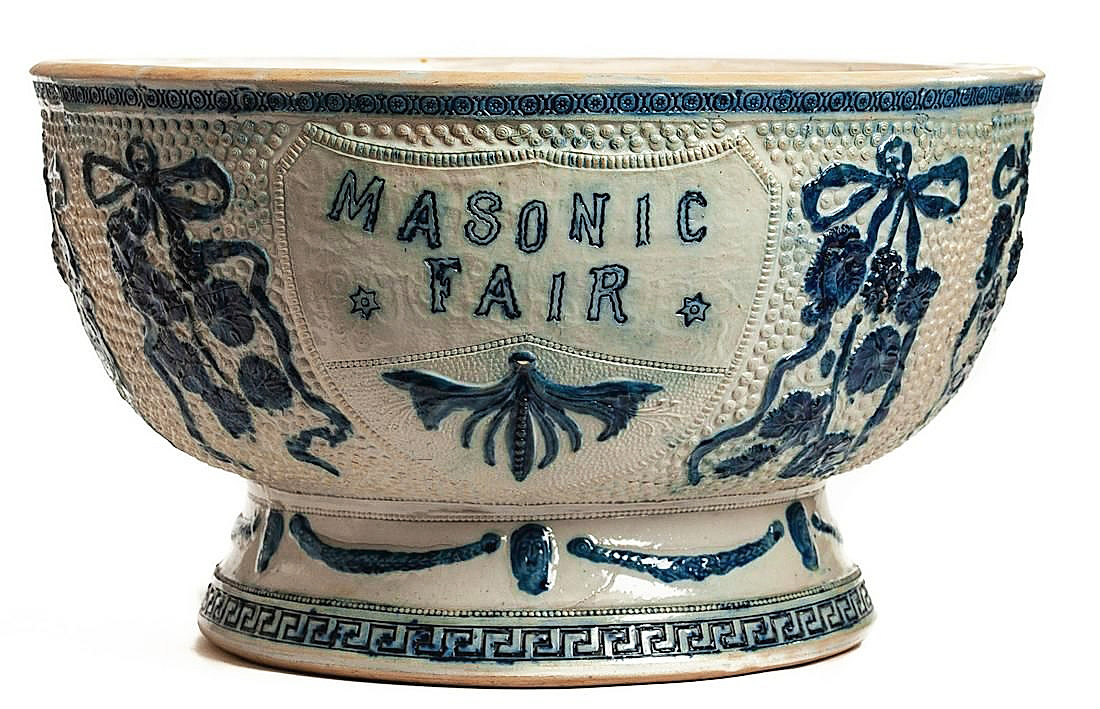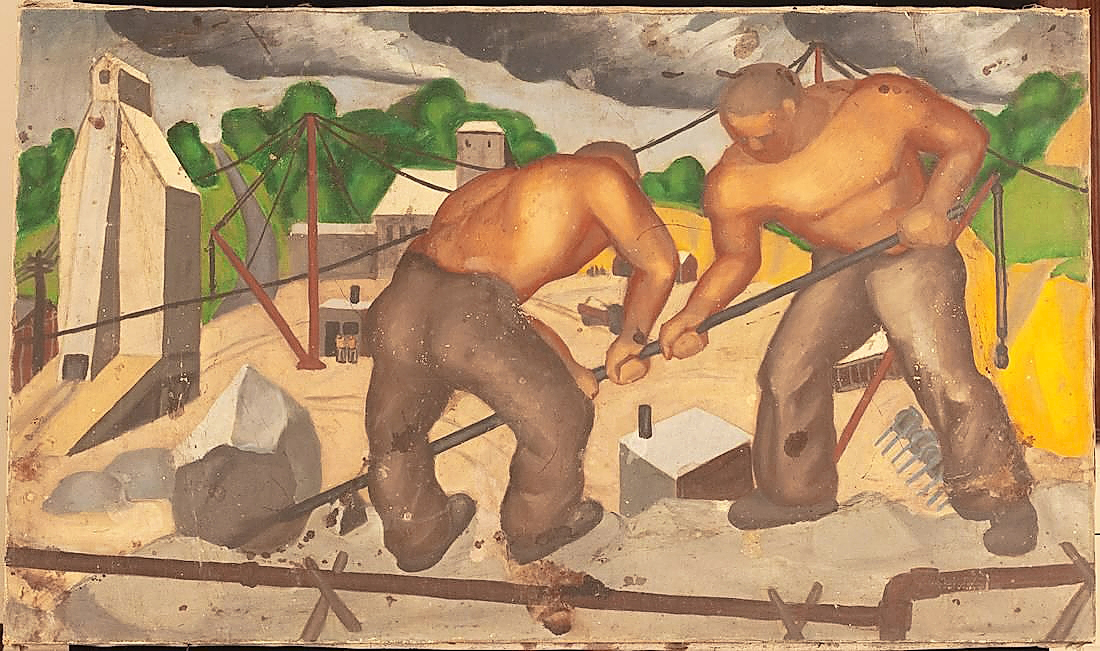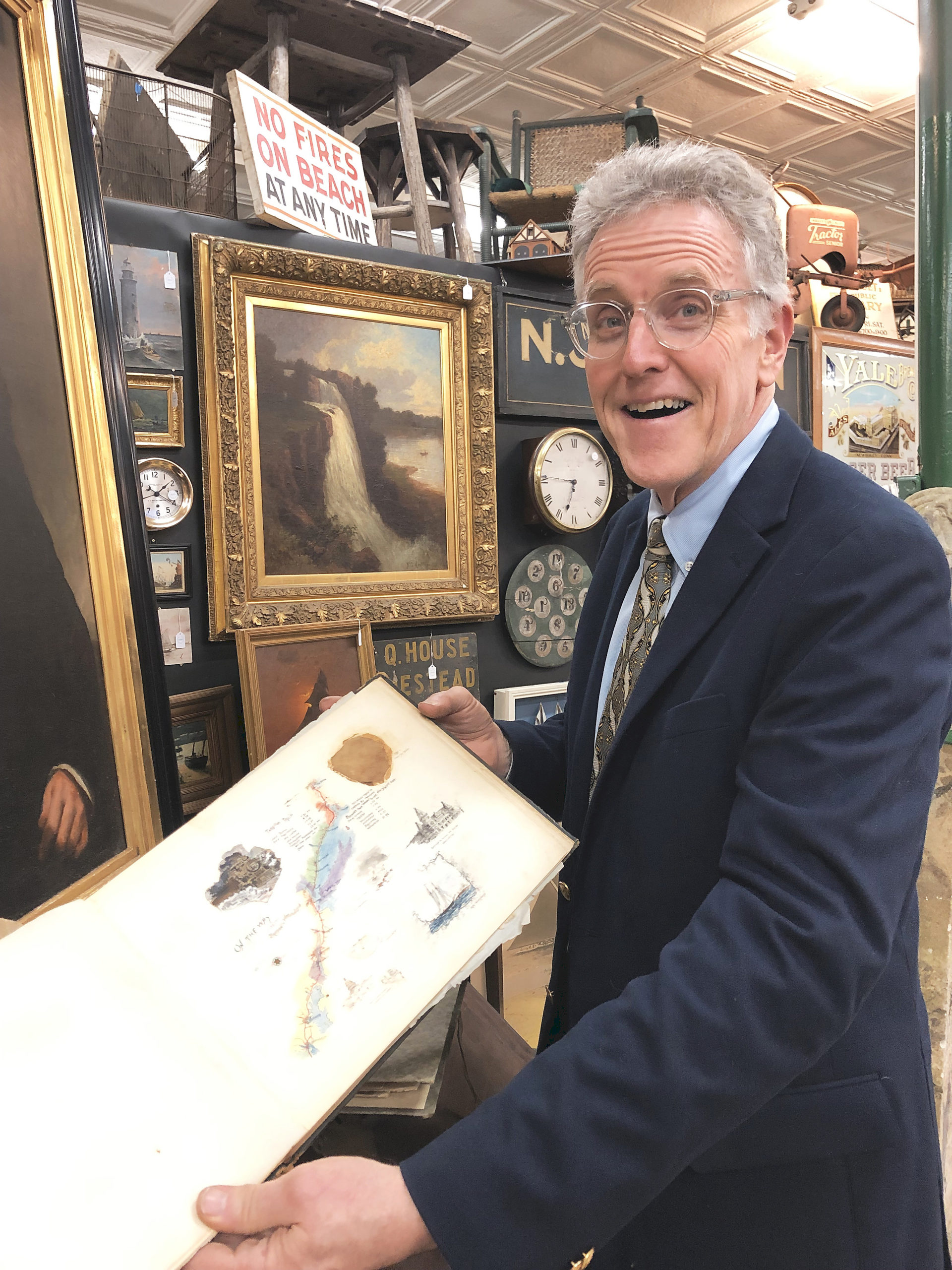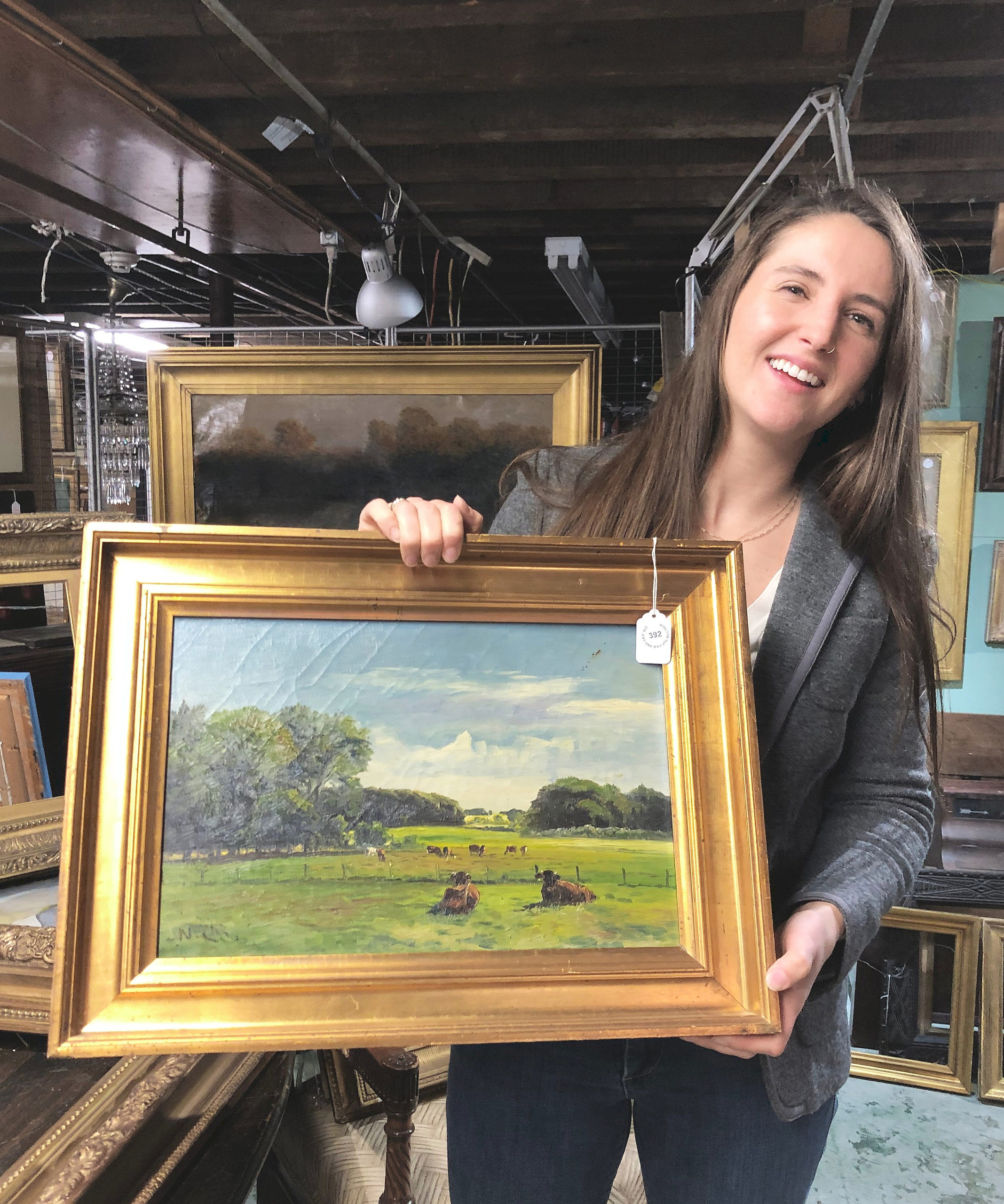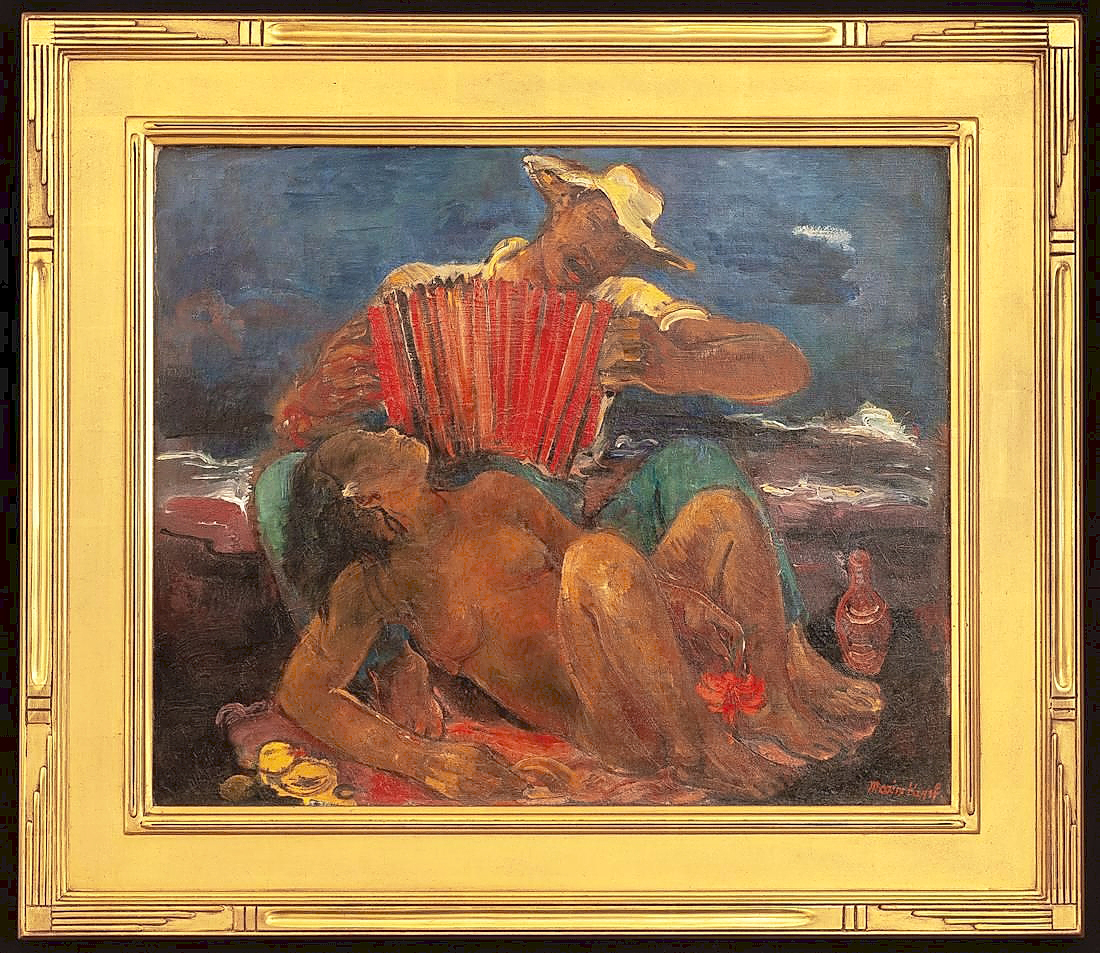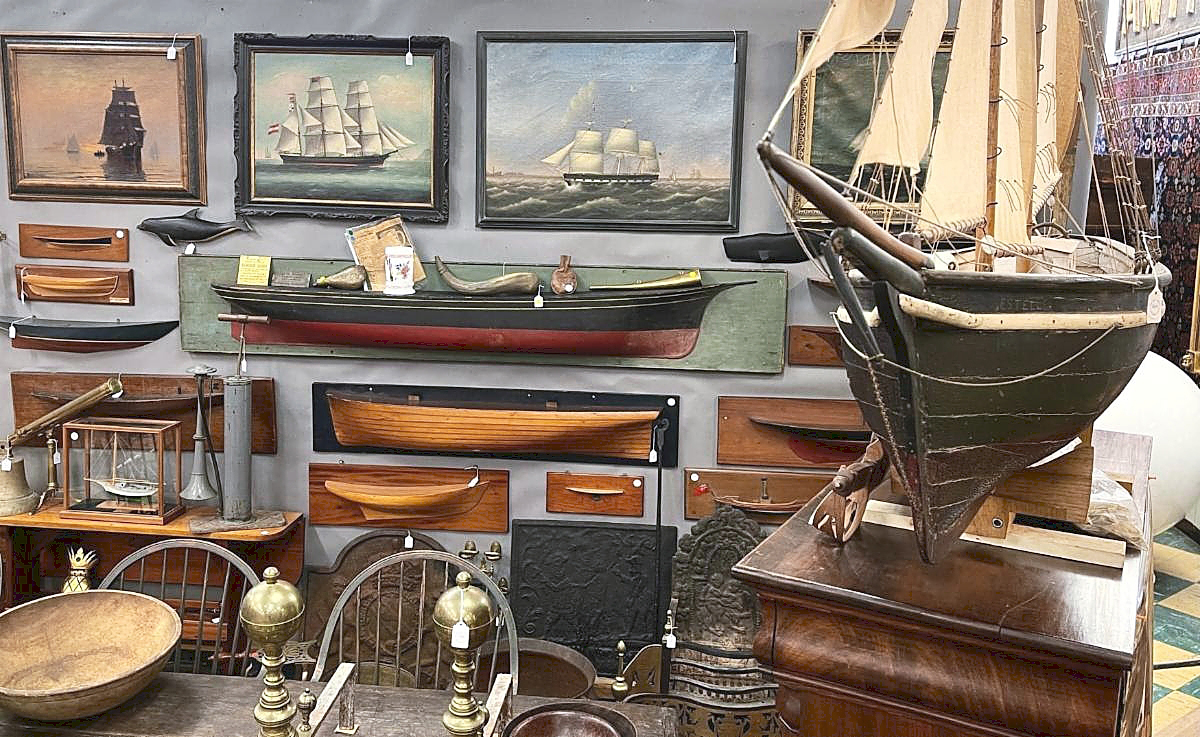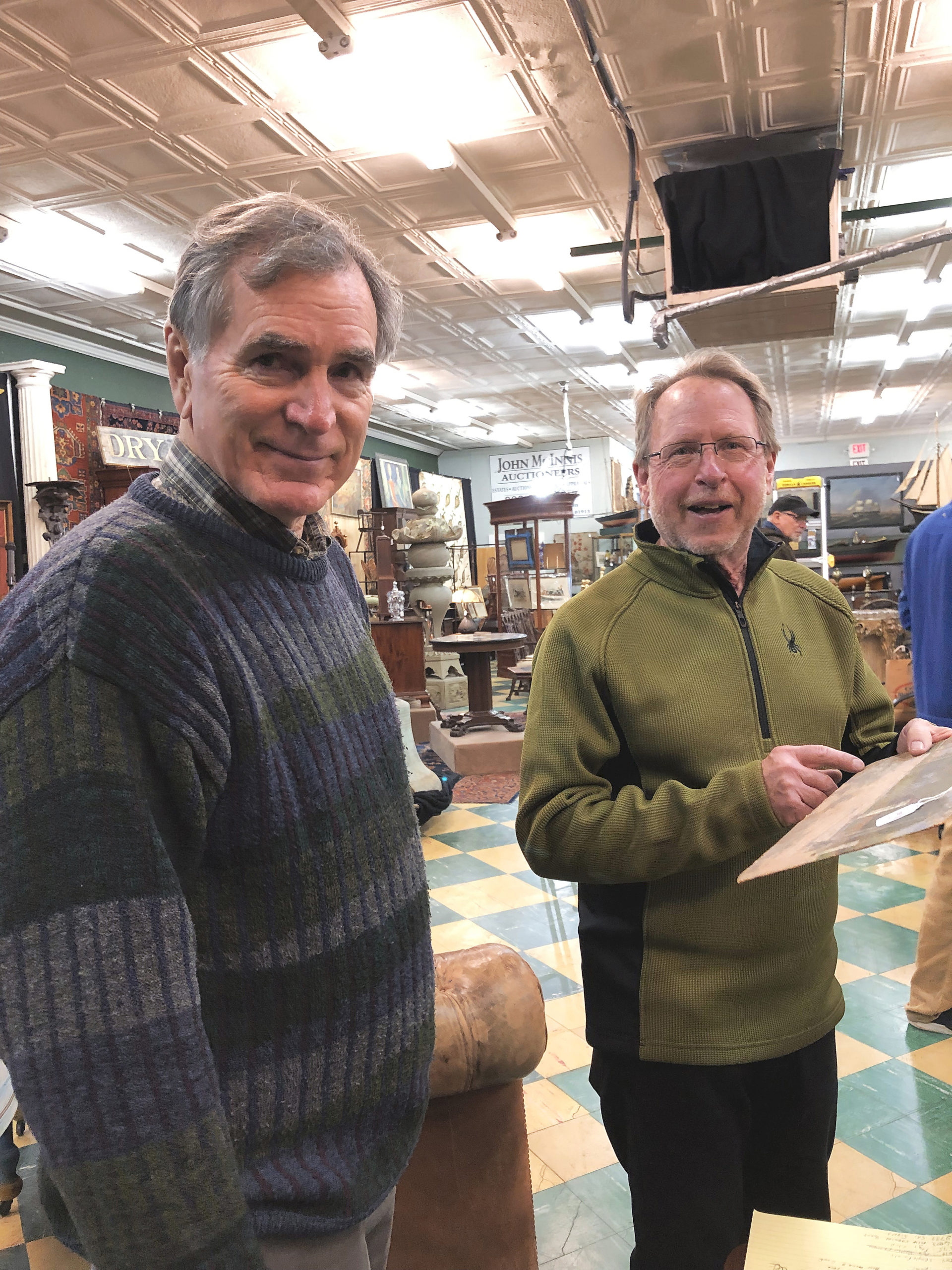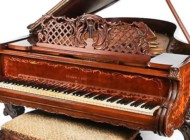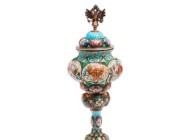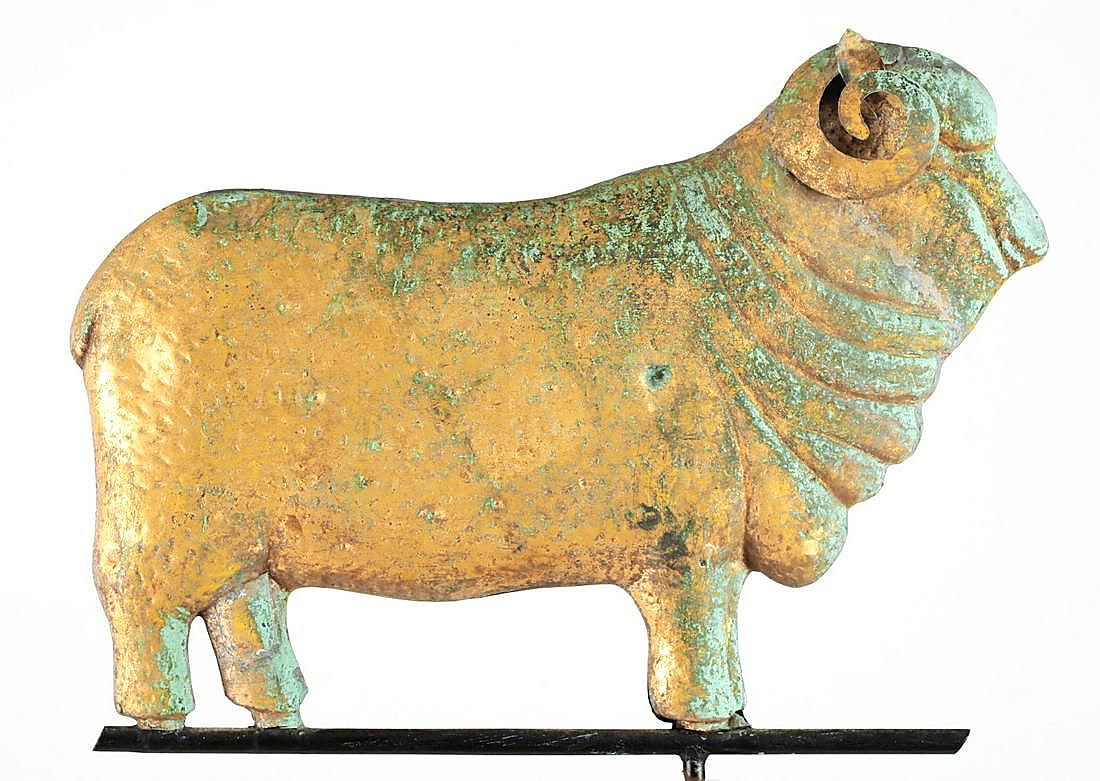
The first item sold on the second day would turn out to be the highest priced of the day. Bidders chased this copper merino ram weathervane, 29 inches long, to $24,800.
Review and Onsite Photos by Rick Russack, Catalog Photos Courtesy John McInnis Auctioneers
AMESBURY, MASS. — You could almost say that there wasn’t just one of anything at John McInnis Auctioneer’s May 4-7 sale. Artwork hung everywhere, including on some walls built just for this sale. There were shelves full of Vienna bronzes, cabinets full of desk clocks, shelves full of paperweights, there were cabinets full of miniature bird carvings and decoys, there were cabinets full of Chinese export porcelains, there were showcases full of small Asian items and more. The showroom floor was filled with furniture, large garden fixtures, large carvings, tea caddies and still more. There were dozens of books, files of ephemera and photographs. Numerous one-of-a-kind items were waiting to be rediscovered. It was an incredible collection assembled by one family over two generations. And it was all sold without reserves.
The sale was organized so that the first lot sold each day was the one that was expected to be the highest priced item of the day. The strategy allows collectors, who are unsuccessful on a high-priced work, the flexibility of spending their remaining funds on other lots. In auction parlance, it’s called “front loading” the sale and it worked well for John McInnis.
The sale was live each day, with active internet and phone bidding as well. The size of the crowd in the room varied from day to day and hour to hour, but what did not vary was the number of people actively watching the sale on the two internet platforms: more than 1,500. Online catalog listings included numerous photographs of each item. Dan Meader, gallery director, said that much of the photography was done onsite and it took weeks.
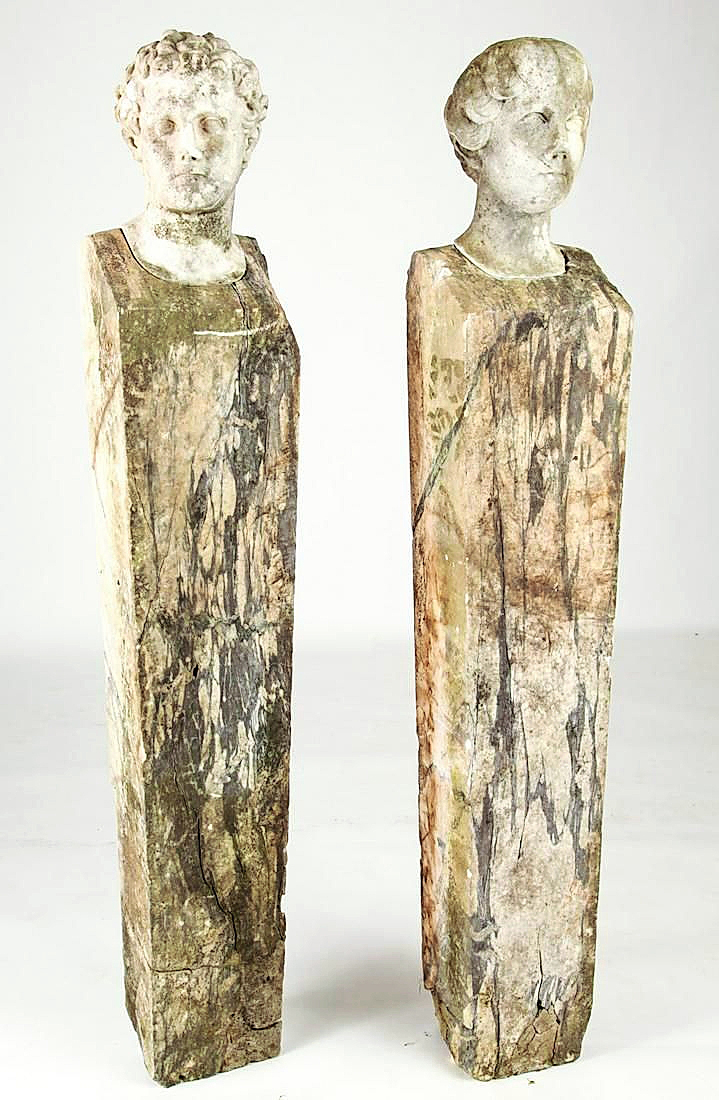
Leading off the third day was this pair of Roman marble herms, which were more than 5 feet tall. Herms are sculptures, usually of a head, on a simple squared base, such as seen here. The pair, the first lot of day three, earned $29,760.
It was apparent that there were certain themes that appealed to the collectors. They liked animals, especially dogs, and there were several lots of Vienna bronzes of animals, Staffordshire groups, ceramics illustrating insects and other animals and so on. As far as artwork was concerned, a theme would have been difficult to identify. Bidders liked landscapes, but again there were many paintings of animals. The subject matter was varied and eclectic. The collectors did not shy away from very heavy items: selling for $3,100 was a massive, 8-foot-tall carved stone pagoda moon lantern that had seven sections. The weight was not stated but it’s possible that it sold for just $1 a pound. There were also two very large bronze church bells. One, about 29 by 30 by 30 inches, engraved “Presented by Charles H. Perkins January 1889,” and was believed to have originally hung in the Roger Williams Free Baptist Church in Providence; it sold for $1,736. Small size was not a concern to the collectors, and there were numerous Vienna bronzes; one lot, which also realized $1,736, was comprised of 28 examples, some as small as 2½ inches tall.
In keeping with the “start expensive” strategy, the first day began with a painting that earned $49,600, not only the highest price of the day but also the highest price of the sale. “Tahitians on the Beach” was painted by Maxim Kopf (1892-1958). His work is reminiscent of Gauguin’s, and Kopf traveled through the Pacific Islands in 1925, creating a large number of canvases, especially of Tahiti.
There were dozens of paintings throughout the sale and many did well. “From the Boston Public Garden,” an Impressionist scene by Arthur Clifton Goodwin (American, 1864-1929) earned $14,880. Goodwin painted many scenes in Gloucester and Boston. His works are in the collections of several museums, including Boston’s Museum of Fine Arts, which held a solo exhibition of his works in 1974. There were several paintings by Rockport, Mass., school painters, including Anthony Thieme. His “Doorway of the Nickels-Sortwell House Wiscasset,” a property now owned by Historic New England, earned $5,580. Pre-dating these works was a portrait miniature by Sarah Goodrich Goodridge (1788-1853) which brought $8,680. It was inscribed on the reverse “Joseph Whitney at the age 26 years painted by Miss Goodrich 1822.”
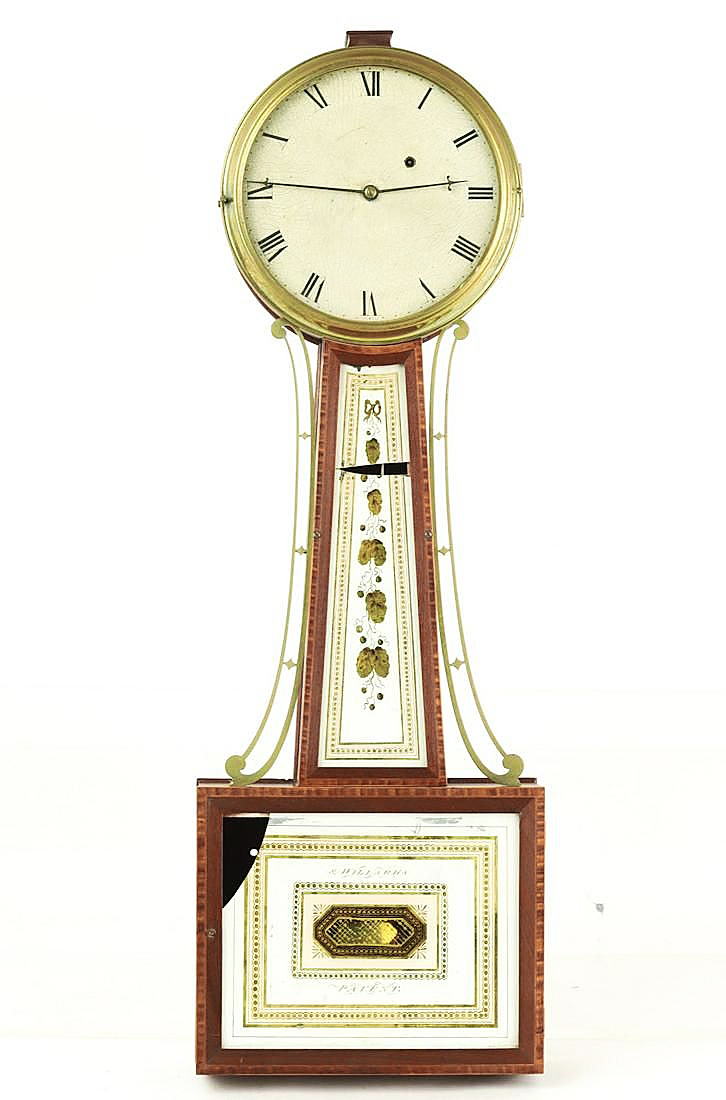
The rarity of this Simon Willard patent wall clock helped it overcome some condition issues as it brought $18,600, more than ten times the estimate.
American folk art, furniture and clocks were sold on the second day of the sale, with the first lot, a large copper merino ram weathervane realizing $24,800, the highest price of the day. There were about a dozen banjo clocks by a variety of makers, including the Willards, Howard, Chelsea, Waltham and Stennes. It was a rare Simon Willard Patent banjo that was most sought-after, selling for $18,600, despite both reverse-painted glass panels being broken and having some missing pieces. The online catalog had more than 10 photos showing the details of this clock. Prices realized for banjo clocks ranged from the Willard down to $62 for a Nineteenth Century miniature Waltham, only 21 inches tall. The most popular of the tall case clocks was an early Nineteenth Century example by Concord, Mass., maker Nathaniel Munroe. It had a pierced gallery crest with original faceted ball finials, the original painted dial, and it reached $10,540. There were also numerous photos of this clock online. A tall case clock by convicted murderer Elmer Stennes brought $2,480.
Cataloged as “probably Newburyport,” a North Shore serpentine Chippendale four-drawer chest brought the highest price, $13,640, of the several pieces of American furniture. It had a fan-carved apron, and ogee legs with ball and claw feet. Another serpentine four-drawer Eighteenth Century chest of drawers with ogee bracket feet and original hardware brought $9,920. An early Nineteenth Century inlaid tambour secretary with three drawers had banded inlays and a gilt, carved eagle finial; it earned $4,340.
Not all the furniture was formal. A primitive oak trestle table, dating to the late Eighteenth or early Nineteenth Century sold for $3,720. During the preview, it was displayed with a set of six continuous-arm Windsor chairs made by the D.R. Dimes Company; it brought $4,340.
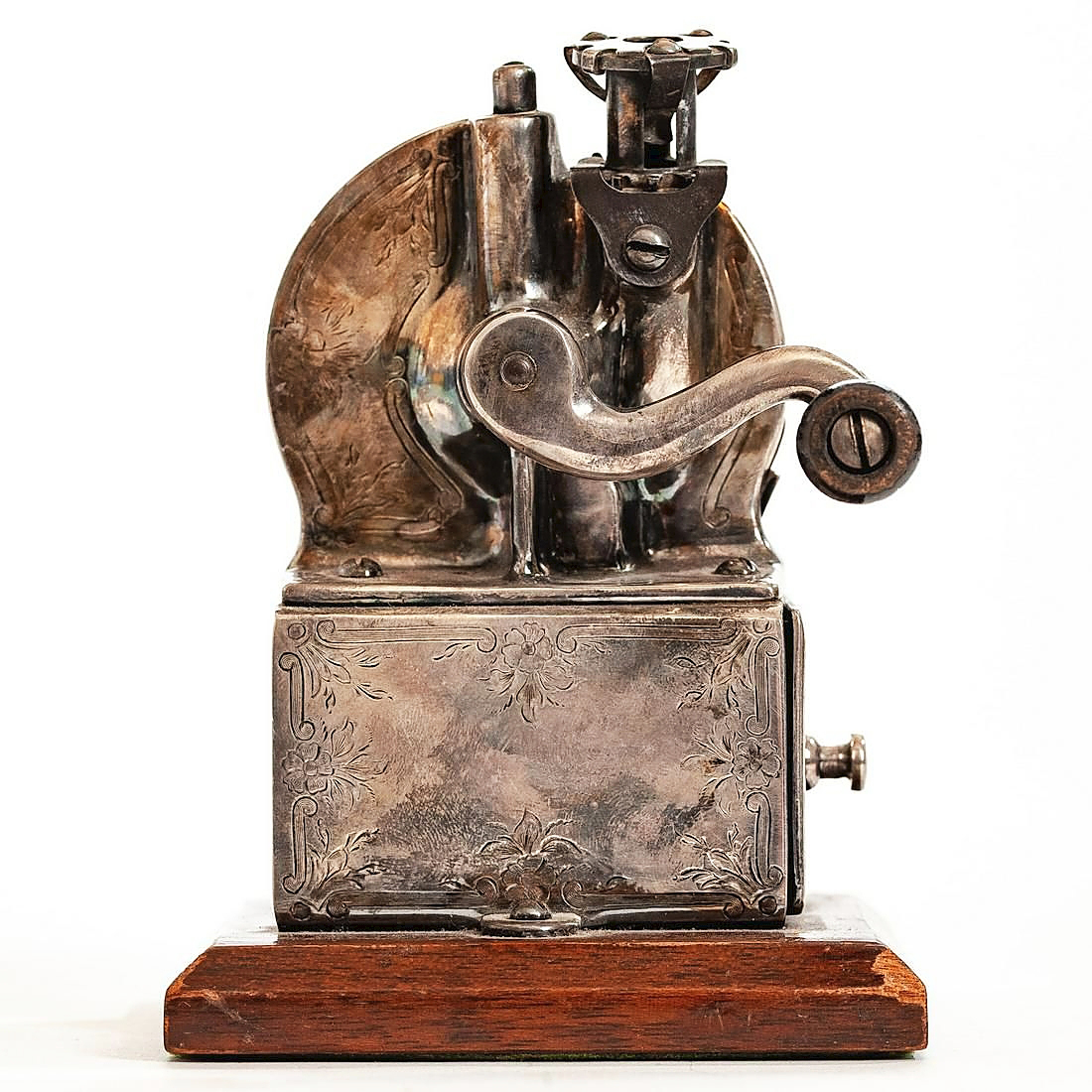
The sale was full of unusual objects. You would probably have trouble identifying this as a pencil sharpener. It’s silverplated and engraved but it’s mounted on a wooden base, so the maker’s name and patent date, if there is one, is not visible. Kali McInnis was intrigued enough to see if it still works. It does and someone went home with this very unusual item for $744.
One of the days offered a large selection of ephemera, books and related items, showing the broad range of interests of the collectors. The first lot of the day was a gold 1770 funerary ring that earned $26,400, again the high-water mark for the session. It had been given to pallbearer Reverend Samuel Haven of Portsmouth, N.H., at the funeral of Reverend George Whitefield on September 30, 1770, and was so inscribed. Whitfield was a famous, although controversial, Anglican cleric and evangelist who was one of the founders of Methodism and the evangelical movement. An important atlas published in 1818, The Portulano de la America Setentrional, was printed by the Spanish Admiralty and showed all the important harbors of southern North America and the Caribbean. It brought $17,360. There were three editions; this one had 106 charts. One of the earliest items in the sale was a 1656 grant of land to Anne and Hannah Bradstreet. Anne was the most prominent of early English poets in North America and one of the first writers in Great Britain’s North American colonies to be published. With defects not affecting the handwritten portion of the document, it realized $16,120.
From the 1656 document, we jump to the Twentieth Century and a large group of letters, handwritten in 1929, by N.C. Wyeth discussing his work and family matters. Five were written to his daughter, some discussed his work on the 16 plates he prepared for the Odyssey; the group of letters sold for $11,160. Another unusual offering was a working copy of The Pocket Book of Baby and Child Care by Dr Benjamin Spock, with pencil edits and inline annotations by the author that sold for $8,680.
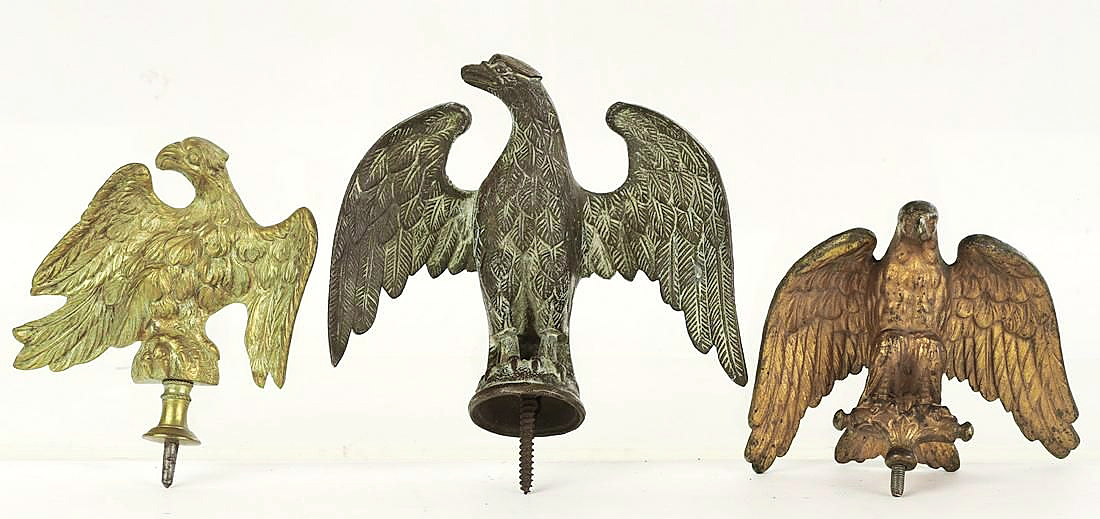
Useful for restorations, this lot of three eagle finials brought $2,232, far above the estimate. One was bronze, one brass and the other was cast iron.
As mentioned earlier, one of the themes of the collection was dogs, and there was a large selection of bronze dogs. Two small bronzes of puppies at play, cast by Gorham and done by Edith Parsons, (1878-1956), brought $2,480. A bronze of a Pekinese, about 6 inches tall, by Sally James Farnham (1869-1943) sold for $1,488. A pair of Hubley cast iron bookends in the form of fox terriers earned $434 and a large Vienna bronze of an English bulldog sold for $403. Other animals were included as well. A bronze table lamp with two elephants under a palm tree brought $496 and a 13½-inch Vienna bronze of a pheasant flew to $527. Bringing $744 was a carved agate hippopotamus with sapphire eyes.
After the sale, McInnis repeatedly complimented his staff on their handling of such a large sale. “It was a huge undertaking, and everyone worked together to make it a success. We exceeded our high estimates by about 25 percent and finished with about $1.6 million. We had promoted the sales heavily and that paid off. Around 1,500 people were participating online, and the preview was very well attended. Those who were here generally were here for quite a while — there was so much to see.”
All prices include the buyers’ premium as reported by the auction house.
For additional information, www.mcinnisauctions.com or 978-388-0400.

